Yusuhara Wooden Bridge Museum, designed by KENGO KUMA & ASSOCIATES, is a Bridge-Shaped Museum that connects two public facilities, a hotel and a spa operated by the town, which had been separated by a cliff and a road. It functions not only as a passage between the two facilities but also as an accommodation and workshop, ideal location for artist-in-residence programs.
Yusuhara Wooden Bridge Museum is a Bridge-Shaped Museum that connects two public facilities, a hotel and a spa operated by the town, which had been separated by a cliff and a road.
The museum technically bridges communications in this area. The museum functions not only as the skywalk between the two facilities, but also as accommodations, work and exhibition rooms that cater to artist-in-residence program, thus bridging cultures of the world as well.
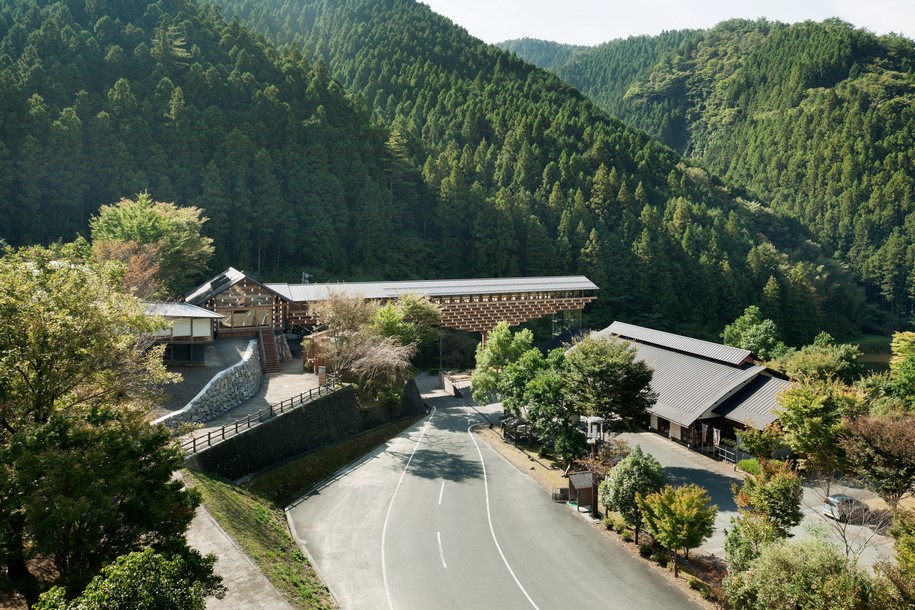
In Yusuhara Wooden Bridge Museum project, KENGO KUMA & ASSOCIATES challenged a structural system which composes of small parts, referring to cantilever structure often employed in traditional architecture in Japan and China. It is a great example of sustainable design, as you can achieve a big cantilever even without large-sized materials.
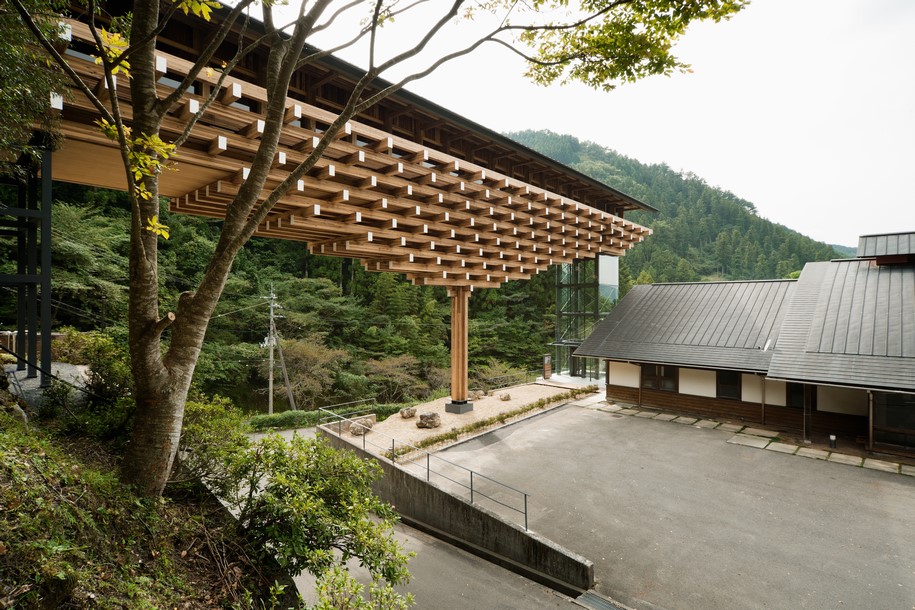
New Form of Framing with Assembly of Laminated Wood with Small Section
On designing a wooden bridge abundantly using locally produced sugi (red cedar), KENGO KUMA & ASSOCIATES sought out a structure to accumulate laminated timberwith small sections, rather than bridging an oppressive-looking crossbeam with enormous sections, so that the architects could realize a bridge’s presence that could merge into the forest around it. “As we studied on, we came to a conclusion that the whole structure could be achieved by pulling out the accumulation of 180×300“hanegi”(corbel)”, said the architects.
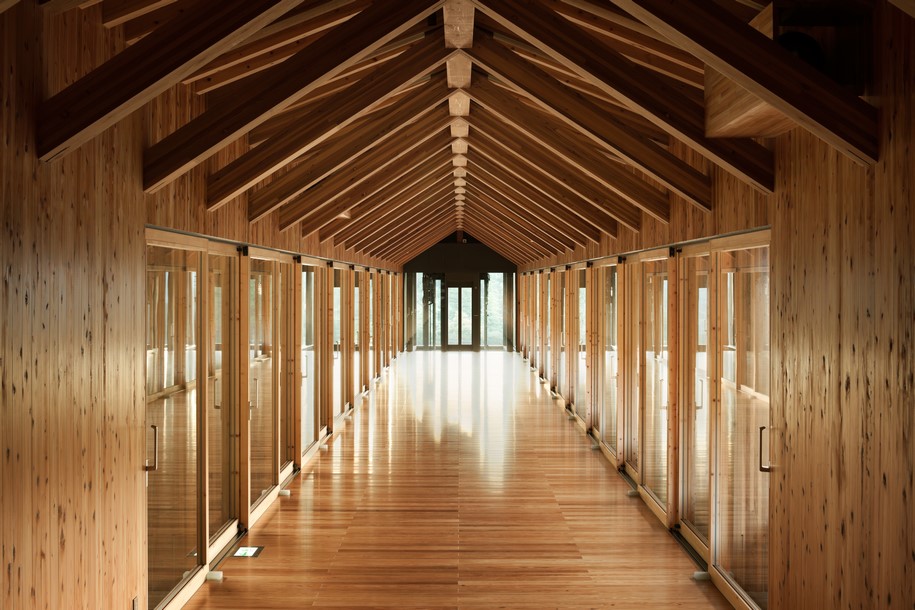
Furthermore, the bridge could be balanced at the center of the pier and be fitted to the geographical features of the site.
This is how the new type of frame construction came into being.
On the edge of the hotel’s end, KENGO KUMA & ASSOCIATES set up a studio, gallery and lodging in roof structure built in the inverted form of this construction.
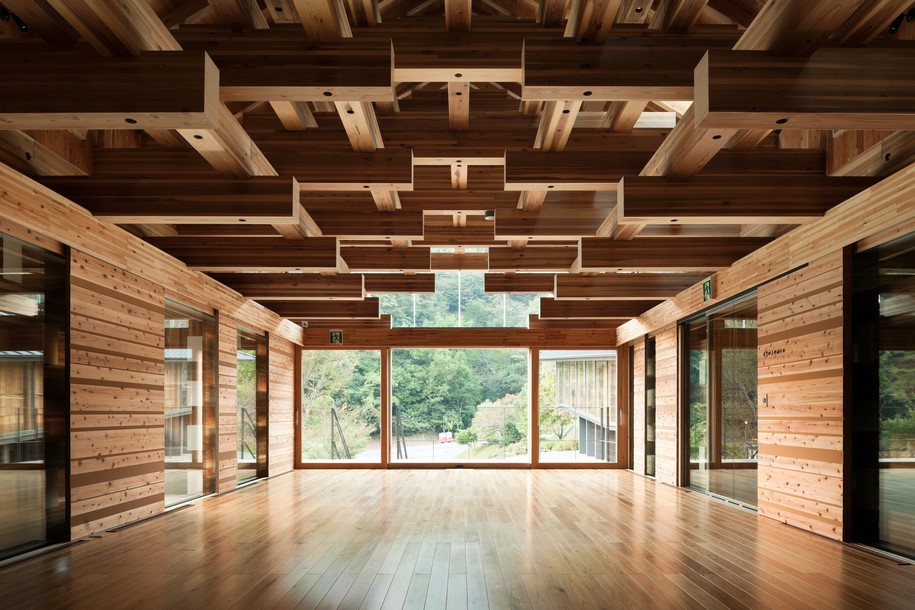
Linking Traditional and Contemporary Expressions
Accumulation of hanegi evokes the traditional construction method of“to-kyo”(square framing) employed in Japan and China, which was devised to support the load from the eaves. By repeating this method persistently to the scale of a bridge, KENGO KUMA & ASSOCIATES were able to present a completely new expression of architecture, while keeping its bona fide Asian appearance.
Laminated wood itself embodies a unit of“masonry in wood.”In this architecture, this composition continues into a larger dimension and achievesa“masonry structure in wood,” bringing out the new expression and potential of laminated wood.
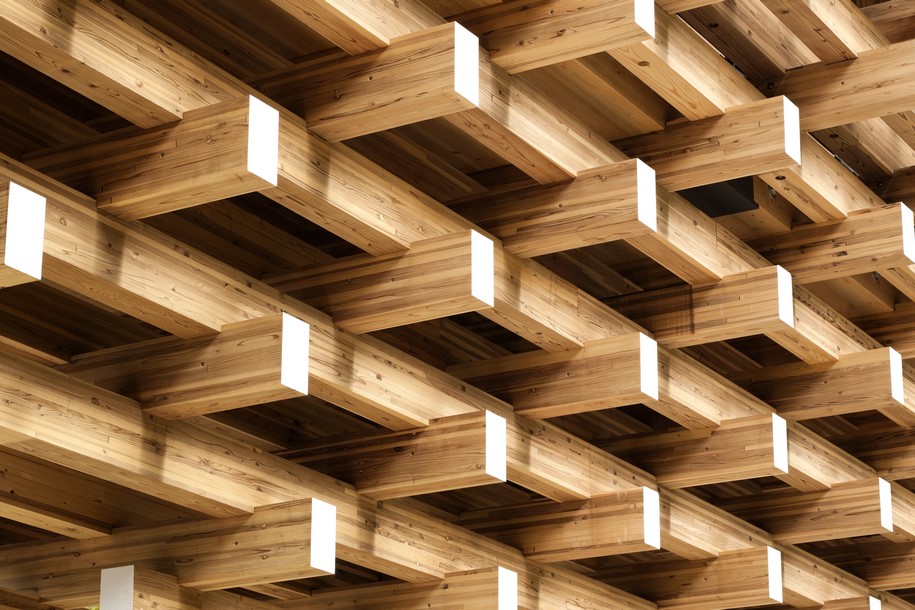
Connecting Varied Themes
The project also aims to“bridge”various issues of the town ‒ revitalization of the local culture, urban design, technique for frame construction, application of natural materials in the traditional design ‒ with one architectural work.
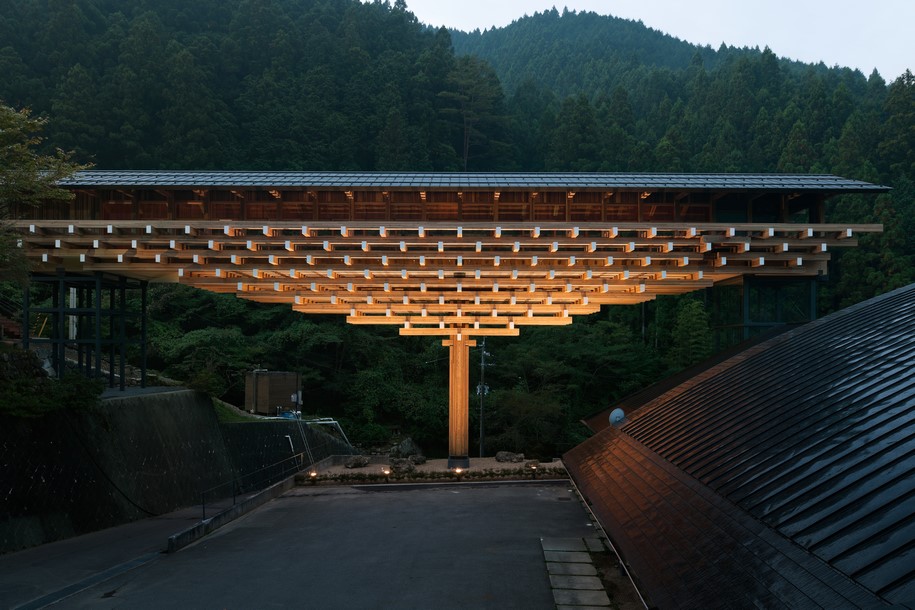
Plans
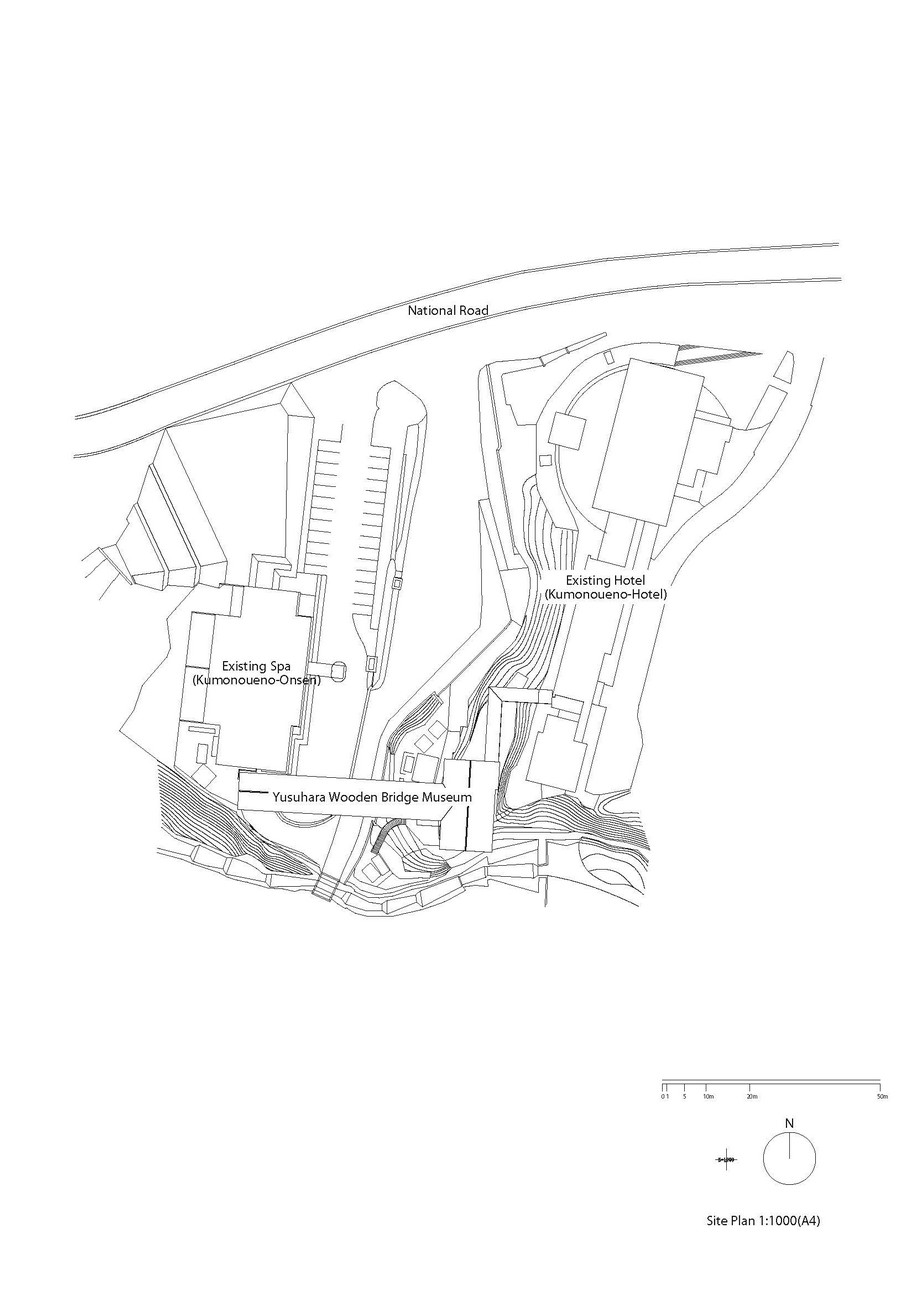
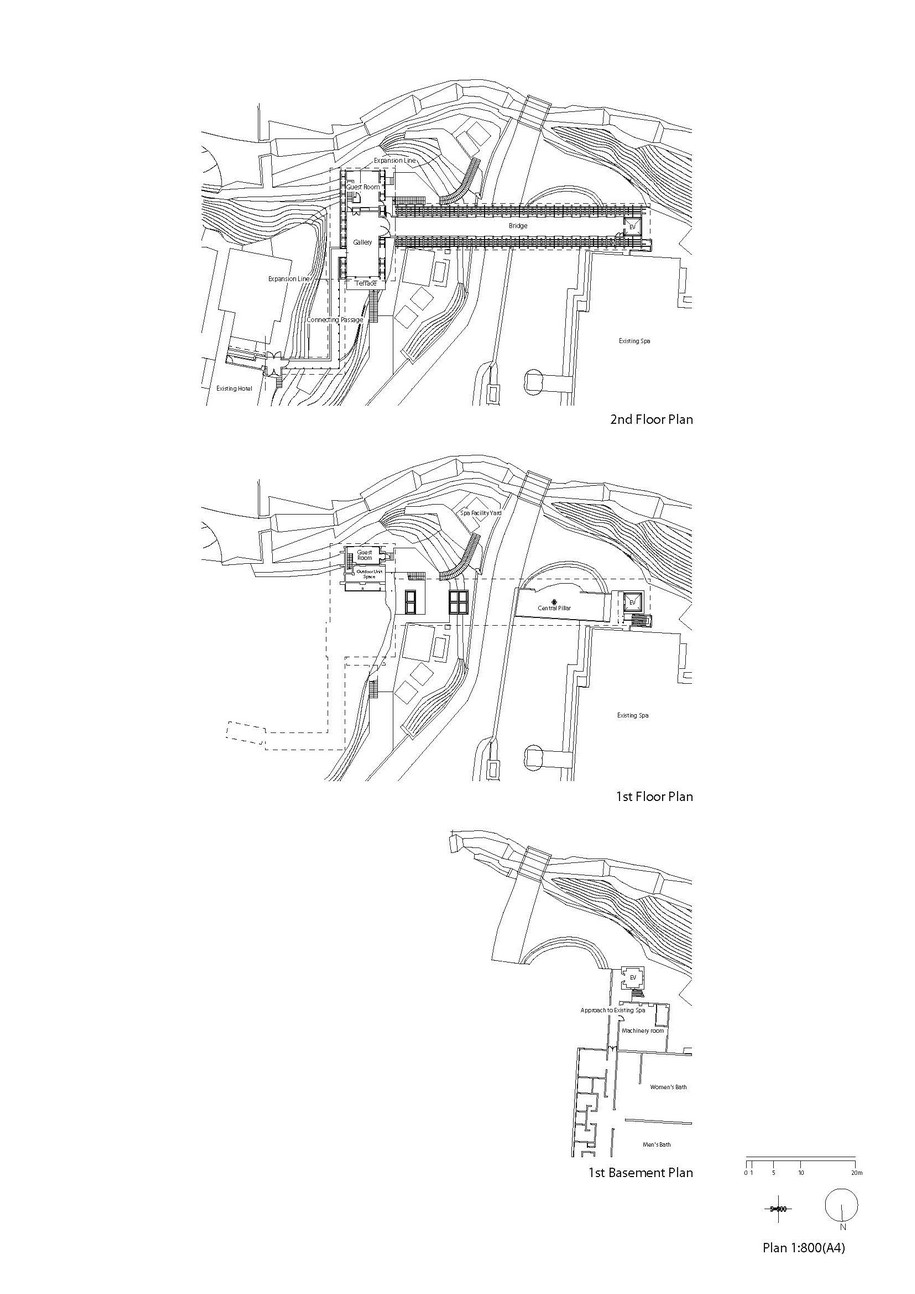
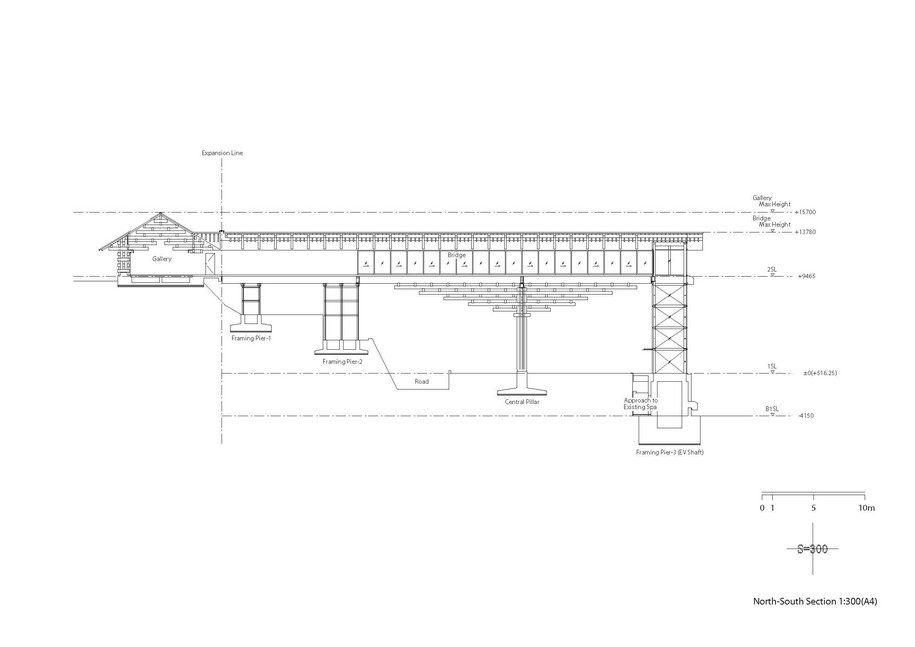
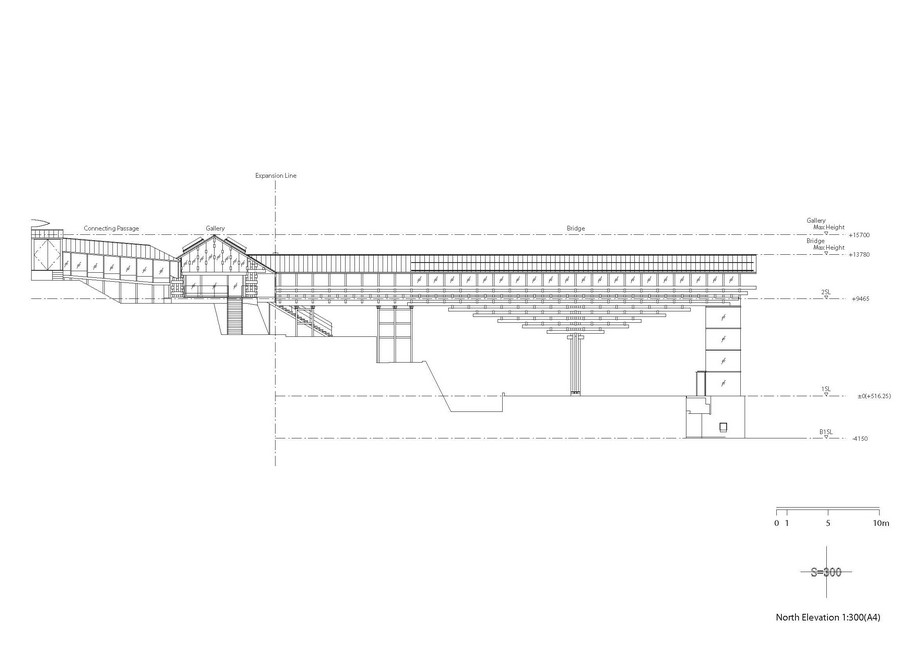
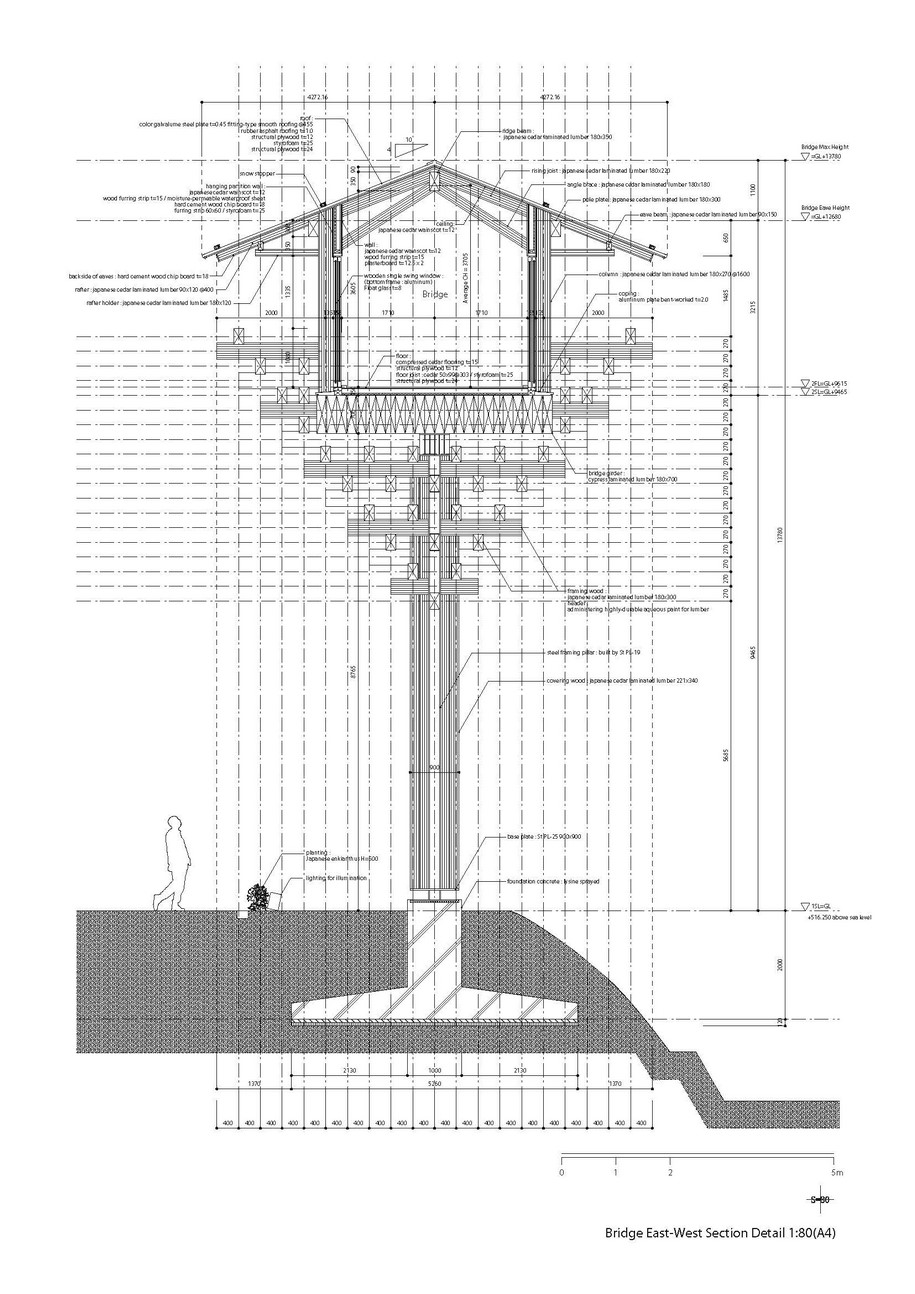
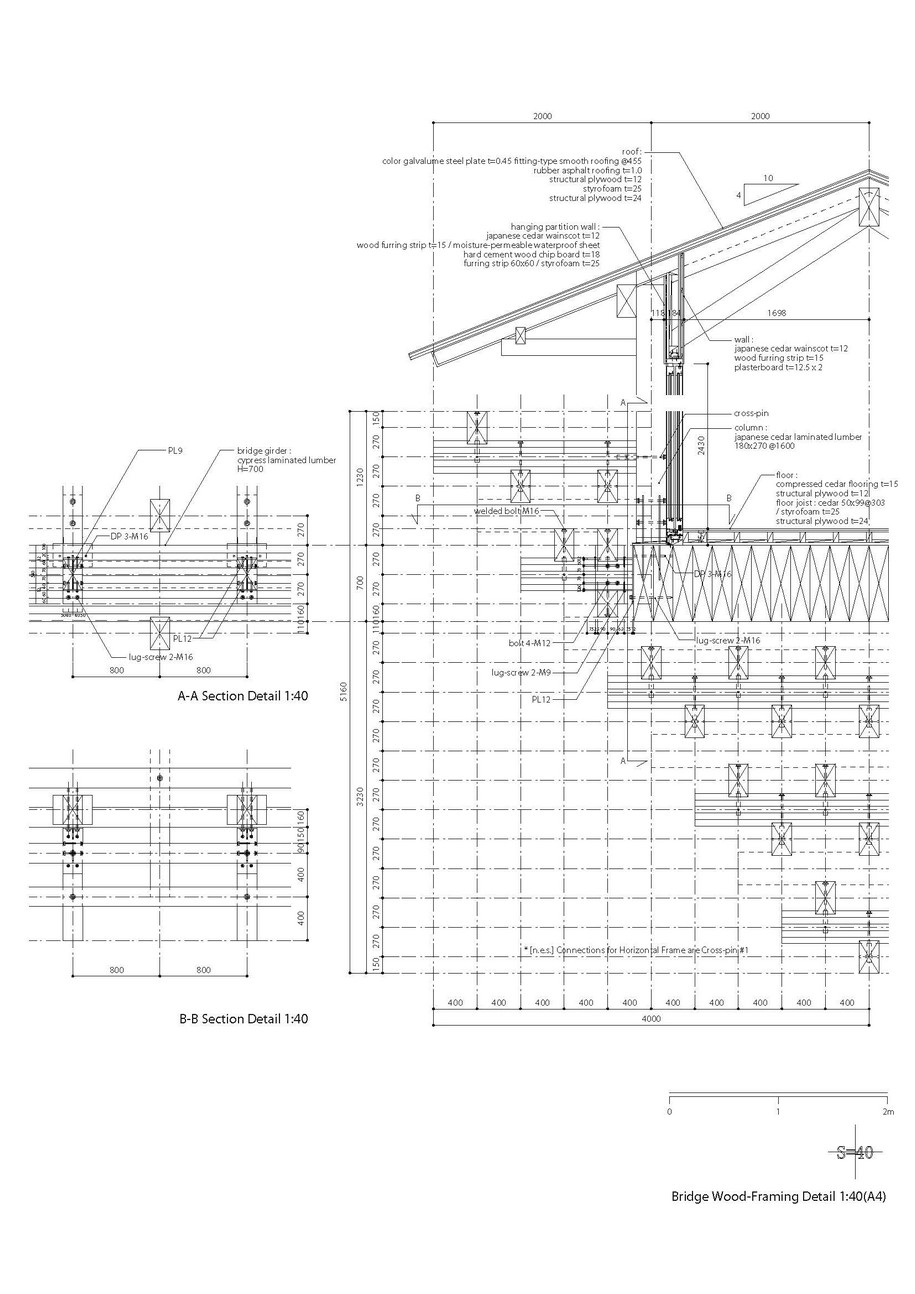
Facts & Credits
Project title Yusuhara Wooden Bridge Museum
Location 3799-3 Taro-gawa Yusuhara-cho, Takaoka-gun, Kochi Prefecture
Client Tomio Yano, Town Mayor of Yusuhara
Type new construction (extension from existing )
Program exhibition space
Design and Supervision KENGO KUMA & ASSOCIATES
Structure Main structure/wood, partly steel frame, reinforced concrete,
Pile or Foundation / Mat and direct foundation
Number of Stories 1 underground, 2 stories above
Site area 14,736.47㎡
Built area 574,15㎡ (total with the existing part: 1,946.97㎡)
Total area 445.79㎡ (total with the existing part: 2,540.23㎡)
Maximum height 13,780mm
Maximum eave height 12,680mm
Supervision Co-operator K’s design
Structure Katsuo Nakata & Associates
Utilities/ Equipment Sigma Facility Design
Construction Shimanto Sogo Construction
Electricity Showa Denki Kogyo
Air condition and hygiene Kansai Setsubi
Design Period 2009.08~2009.11
Construction Period 2010.02~2010.09
Construction cost (including facilities) 331,150,050JPY
READ ALSO: Behavioural Matter _ Thesis by Vivi Malea